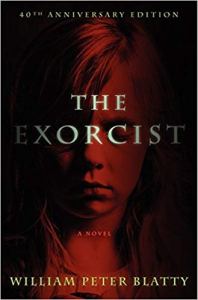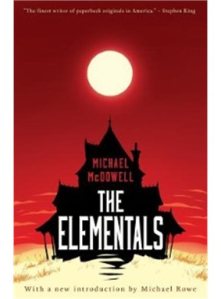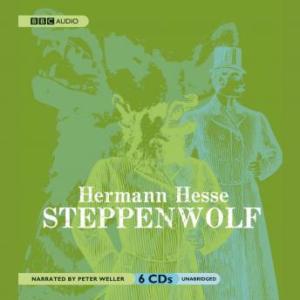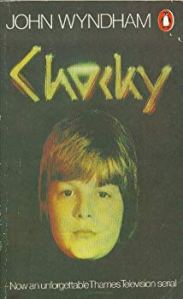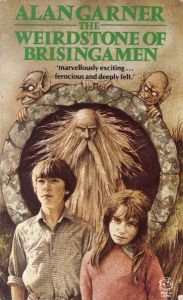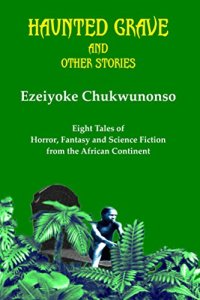Today I’d like to share with you an excerpt from my latest horror novel, “Experiment Nine”.
“Experiment Nine” is a vampire novel with a twist. You won’t find any horror tropes like bats and black capes here. nor will you find any sparkly vampires like the ones in “Twilight”. Instead, be prepared for a jolting, blood-soaked ride into dark science, as lab-bred, genetically-engineered vampires escape into rural Iowa. The novel deals with the cataclysmic fallout from this event and its impact on several people who are unfortunate enough to come across the vampires and survive.

The story of how “Experiment Nine” came to get published is enough to fill another blog post, so I’ll let the pages speak for themselves.
In this except we meet Dr. Fenzig and his subordinate, Reinhardt, who are monitoring the latest batch of test subjects…
You can read more of “Experiment Nine” on Amazon here.
Enjoy.
Chapter Two
The bat flapped its way toward the moon until it was no more than an angled crack in that bone white disc. Beneath it stood a field of pale corn. The corn was pallid because it had never been fed. The stalks wavered toward a single edifice – the Tower.
An octagonal bolt of metal that anchored earth to seventy-five feet of Iowa sky, stood in the center of the field of withered vegetation. Around its base lay a carpet of dead moths, drawn there by some slight, imperceptible vibration.
Small arrow-slits dotted the building’s outer face at precise intervals. Solid steel grates covered every aperture.
At the top of the Tower, a cupola rose to greet the sky, a single, round window at its zenith. The office window overlooked the corn.
Behind the window sat a man at a desk. Fenzig lay down his pen. A single scream had penetrated the quiet. He glanced up at the red light over the door. It remained unlit. He relaxed.
Fenzig rose to the window. He was restless tonight. Nothing unusual in itself but things were progressing.
He decided to take a tour.
He stepped outside his office. A single elevator door was the only feature in this otherwise featureless chamber. He entered the lift, pressed his palm to the biometric scanner. The doors closed.
The moans of the once-human things far below grew in volume, as if they knew he was coming. He saw them in his imagination, heaps of rags shuffling about the dorms in the Tower’s sub-basements, raising their distorted, leathery faces to the fluorescent lights.
He wished Gabriel would let him dispose of them. They could serve no purpose. He was aware of the ironic fact that as much as the tower was their prison, it was also his. He could not leave due to the nature of his tenure to Gabriel’s department. Nor could he ever hold an academic or a practical post again. Not after what had been imprinted upon his résumé and his mind. Perhaps that too had been part of Gabriel’s gambit.
The elevator descended, floor by floor until the doors swished open to reveal another featureless corridor that ended in a steel security door.
Again, he extended his wizened hand to the biometric scanner. A beam of red light stroked his palm, turned green.
The door opened with a pressurized hiss. It kept on opening for three minutes. The door was five feet of solid steel. Still, they could not be sure that it would keep them inside. As for the lead lining, that had initially made a difference, but now and then, stray thoughts leaked through . He caught them sometimes when he passed on the lower levels. Strange, animalistic images.
At first, he could see nothing. Darkness cloaked walls, ceiling and floor. Come into my parlor. Darkness was always present inside the Tower; the shadows were too thick to be natural. He knew it was all in his mind but that didn’t help dismiss the feeling that the darkness was somehow watching him.
The door sealed shut behind him.
Another small corridor led off before him. Beams of light scanned him up and down through a rising mist of decontaminants. The system bleeped affirmatively. A second hermetically sealed door opened. He stepped through into his own nightmare.
Two guards in Hazmat suits stood to attention (they always stood to attention) as he entered. He wondered if they had any minds left at all. They bore automatic weapons, but that didn’t stop each man from stiffening in fear as the omnipresent, automated voice confirmed the identity of the person approaching through the airlock.
“Fenzig, Doctor. Project supervisor. Level one security clearance. Admitted.”
Fenzig walked up to a pair of transparent plastic swing doors at the far end of the corridor without acknowledging the guards. He could feel their eyes upon him, feel their loathing at his hunched back, his dwarfish stature, could also feel his own hate for them radiating outwards. He knew how he looked: gnomish, with pince-nez spectacles perched on the end of his long nose.
He touched another biometric reader. The doors opened. As he stepped through, he saw the guards relax out of the corner of his vision. The doors silently powered shut behind him.
Fenzig’s eyes adjusted to the sudden gloom. The walls of this circular chamber were hidden behind a thick plastic bubble. Beyond that lay the bars of an iron cage, its inhabitants cloaked in darkness. Red overhead fluorescents provided the only illumination.
A man sat in a chair in the middle of the room. Banks of computers littered the desks in front of him. Coils of wiring snaked out of various complex machines and into specially adapted ports in the plastic bubble.
The man’s eyes were glued to a monitor.
“Reinhaldt?”
He gently touched the man’s shoulder. Reinhaldt jerked out of his trance. The muscles of his shoulder had been hard as tensile steel.
“Is it time to go?” the man asked.
“Not yet.”
“What about the others?”
“There is no-one else,” Fenzig replied. “Gabriel says you and I are the only ones he can trust to see things through.”
Reinhaldt rubbed his eyes. “So you’re going to use me until my brain fries?”
Fenzig sighed.
Reinhaldt’s blonde hair glowed silver in the fluorescents. His handsome, Aryan looks had deteriorated, Fenzig noted with a small measure of satisfaction which he could not hide from himself. His brow was slick with sweat. His cheeks were gaunt with worry. Reinhaldt’s duties were taking their toll.
Fenzig noticed how the man’s fingers twitched nervously in his lap, wriggling like frantic eels. Reinhaldt was slipping, perhaps had already slipped.
He had suspected, of course, but he had told Gabriel nothing of their ability to infiltrate the mind. Alone in his office, he was beyond their reach. Reinhaldt, however, was closer to them.
“We only need to observe them a while longer. I know they can be… disconcerting.”
“How much longer?”
“A week? Two?” he offered.
Reinhaldt sighed. “Then can I go?”
Fenzig nodded. Lying had become second nature to him.
“I hear them sometimes,” Reinhaldt said. “I swear they’re in my mind.”
“That’s ridiculous,” he told the scientist. “You’re tired, that’s all. You’ll be fine.”
He patted Reinhaldt’s shoulder but he already heard their whispering, like an irritating itch at the base of his cerebellum.
– You must be lonely here.
– Cold and lonely.
– Gabriel wants to visit.
– See how his latest batch went.
– Does it trouble you?
– Are you tired?
– We could make you sleep.
– Just let us go.
Fenzig felt his own thoughts leap from his body. They were sucked out of his mind before he could catch them.
– Does he want to kill us?
No, Fenzig thought.
– Then why does he come?
– Because he wants you to kill us?
I would never do that. No, I would never do that.
– How can we be sure?
– You’re not strong enough on your own. You’re weak.
– Shut it down.
– Save the project.
– Save us.
The alien thoughts were like surgical knives slicing into his scalp. Fenzig yanked off his pince-nez, tugged at the bridge of his nose.
“You hear them?” Reinhaldt asked.
“It’s nothing,” Fenzig replied. “Don’t worry, Doctor. Soon, this will all be over.”
Reinhaldt said nothing. His Adam’s apple bobbed, his facial muscles clenched, but he simply stared at what lay beyond the plastic bubble.
Fenzig caught only a glimpse of them as he left. He knew better than to look at them full on – to do that would be to lose himself. He saw outlines, a head that raised itself inquisitively, an arm that hung languidly from a chair. No more.
There was nothing else to say. He had only visited Reinhaldt to satisfy his own curiosity. He re-entered the decontamination chamber, leaving Reinhaldt alone. The steel security door slid shut behind him with a re-pressurized hiss, and the guards relaxed once more.
***
Reinhaldt remained frozen in his seat. A solitary trickle of sweat wove its course down his temple. He wanted to wipe it away, but could not. They held him.
Unlike Fenzig, Reinhaldt had long ago given up trying to watch them from the corners of his vision. Now their eyes burned into his soul. Even though there was no scientific reason why their eyes should have that effect, or why he should believe he had a soul for that matter. He only knew what he felt.
The lesser, weaker minds had flinched. Three observers had gone insane in so many weeks. Only he had held out so far.
The other staff busied themselves with endless rounds of caring for their mistakes. But the failures did not matter. What really mattered lay beyond that plastic bubble.
He had personally dissected the last six test subjects and had learned immeasurable amounts from the bodies. Nobody knew what caused this final six to survive. Apparently, the virus had done its job too well, allowing the others to simply will their own death. These six were more or less fortunate, depending on your point of view. This time the virus had done what it was designed to do.
But they had underestimated the strength of will of their subjects. They had resisted all attempts at conditioning. As soldiers, they were useless but as something more…
They probed his mind but instead of shrinking from them, he embraced them. They had promised him great things, and he had no reason to doubt their intentions. They were noble, pure. Magnificent in their terrible beauty.
He wondered if they could reach out to other, nonhuman things – a bird, a mouse, a bat. What must that be like?
He scribbled his musings down in his notebook, wondering if they were actually his thoughts at all.
One image had been growing in his mind for some time now: a key turning in a lock.
They had been imprisoned for too long.
Fenzig’s mind had revealed that a visit from Gabriel was imminent (which probably meant closure for the project and the termination of its latest test subjects). Reinhaldt knew the time to act was upon him. They commanded it. He rose robotically, walked to a control keypad that hung from the low ceiling, pressed the first of three red buttons.
Lights flared. A klaxon sounded.
The guards came running but he had already thought of that. The plastic doors to this chamber were locked – the pneumatic servos jammed by hand. A desk full of computer equipment barred further entry. He did not remember putting it there, but he was glad he had.
“Sir!” The guards yelled through their intercoms. “Mr. Reinhaldt! Stop what you’re doing, sir!”
He pressed the second button. The room began to depressurize. The plastic bubble rippled, then lifted.
A stale, zoo-like smell filled the room.
The guards fired their weapons to gain access. It did them no good. Their bullets lost momentum on contact with the double layers of superdurable Perspex, fracturing impotently against the outer surface. The doors had been designed to prevent any break-out. They served equally well to prevent a break-in.
Reinhaldt hesitated. A computer voice told him that the cell was no longer sealed. In unhurried tones, it warned him that there was a high risk of contamination.
His fingers halted over the last button. Some small, rational part of him wanted to stop. His fingers clawed at the console, waging an internal war.
Then he saw their eyes, their wondrous eyes, and he pressed the third button.
The iron cage rose. Its bars clanged into the ceiling. The Guards yelled out to Jesus, God, and Mercy.
They emerged into the light, glorious butterflies from a plastic chrysalis. Mankind’s greatest achievement. Science and distorted nature, fused into a strange, unhappy poetry.
He marveled at them.
I did what you asked. Now will you reward me?
– Of course.
– We bring you a gift.
– The greatest gift.
– We bring you peace.
It hit him like a dark brick, their hate. Hatred for anyone connected with the project. They had deceived him, betrayed him. He was their servant, their weapon. They were gods, but they were vicious cannibal gods, and not to be trusted.
His screams were cut off before they began. Blood and several pieces of his offal splattered the monitors. His notebook fell to the floor, opened at a random page.
The page bore one word repeated over and over…
Darkness.
* * *
You can read more of the book and buy a copy for Kindle on Amazon by following this link: http://a-fwd.com/asin-uk=B07F6S2YSZ








 Tron Legacy. Like Tron, only more so.
Tron Legacy. Like Tron, only more so.
